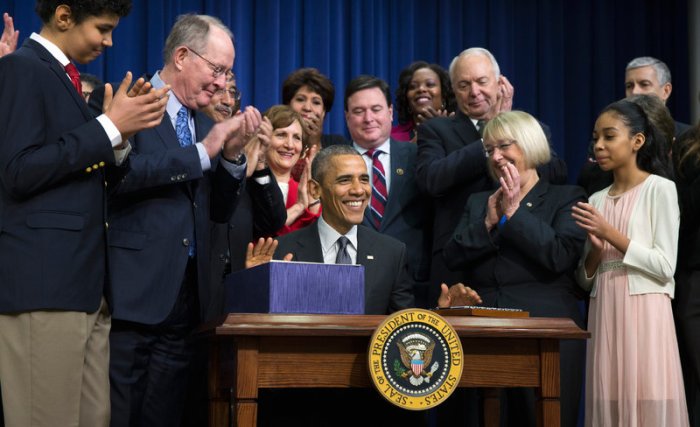
If something is wrong with children, it must be the school’s fault.
Right?
If kids can’t read, write and do ‘rithmetic, the teachers must not have taught ’em right.
It couldn’t have anything to do with home life, generational poverty, economic inequality and systemic racism.
Except that it almost always does.
Inextricably.
The fact is children who don’t live in safe, loving homes have much greater difficulty concentrating and caring about academics. Kids with impoverished parents are much more likely to go to underfunded schools and sit in classrooms that are racially segregated.
None of that is under the control of teachers or schools, but a focus on high stakes standardized testing, school privatization and dangerously unregulated ed tech hides the problem.
It’s not that teachers don’t teach. Inequality, prejudice and privatization – these are the root causes and the reason we do nothing about them generation after generation is that we have an easy scapegoat in the public schools in general and public school teachers in particular.
Take student absences.
It’s a huge problem.
When kids don’t show up to school, they learn less. It’s a simple concept.
Yet just four years ago when we had a chance to rewrite the federal law governing public education to actually DO SOMETHING about the problems we’re facing, we dropped the ball. Again!
The Every Student Succeeds Act (ESSA) requires states to include five indicators measuring school performance: four based on academic achievement, and a fifth, “non-academic” measure of student success.
Most states have adopted chronic student absenteeism as this “fifth indicator.”
So we take those five indicators, weight them and combine them together to get overall school scores that are used to sort and rank educational institutions. That way we can prioritize funding to the highest performers and withhold it from the lowest.
It’s the same supply side nonsense we’ve been doing for years with a few numbers moved around and given a different name.
Schools overflowing with resources serving rich white kids get a sticker. Schools starving for resources serving poor brown kids get a kick.
And somehow that’s supposed to help things get better.
Don’t get me wrong. Absenteeism is important.
Nearly 8 million students missed 15 or more days of school in 2015-16 — an increase from the 6.8 million who missed the same amount in 2013-14, when the federal Department of Education began tracking the data. And there’s a mountain of research that links chronic absenteeism with poor academic performance, delayed graduation, and increased dropout rates.
But putting it all on neighborhood schools and local districts is a huge abrogation of responsibility.
By and large, public schools do not cause students to be absent. Nor do they have the resources to ensure these students start attending.
But we’ve found someone to blame and that’s really all this whole exercise was about in the first place.
It’s like denouncing your doctor for your disease. It won’t cure you, but it might make you feel justified as you die.
The reasons students are chronically absent have little to do with individual schools.
According to Attendance Works, a non-profit focusing on ways to improve student attendance, the main causes of chronic absences are:
•Chronic disease or lack of health care and/or dental care.
•The need to care for siblings or other family members.
•Unmet basic needs: transportation, housing, food, clothing, etc.
•Trauma.
•Feeling unsafe getting to school.
•Academic or social struggles.
•Being teased or bullied.
•Poor school climate or unsafe schools.
•Parents had negative school experience.
•Lack of engaging and relevant instruction.
•Peer pressure to be with peers out of school vs. in school.
•No meaningful relationships with adults in school.
•High suspension rates and disproportionate school discipline.
Certainly some of these things are under the control of school directors, administrators, and teachers.
Schools can and should provide safe ways for students to get to and from school. They should work to reduce bullying and make school a welcoming place for all children. They should provide engaging instruction, fair discipline policies and reach out to parents and the community.
But most schools are already doing that – or certainly trying to do that within the confines of their budgets.
My own Western Pennsylvania district has been flagged by the Commonwealth for increasing chronic absences. In the state, this is defined as students with 10 or more unexcused absences. We’ve been put on an improvement plan – which basically means an employee at the state Department of Education wagging his finger and telling us to get better or else.
However, the overarching problem and solution are easy to see. We are a district without busing.
The high school and middle school sit on top of a hill. Students who live in the poorer sections of town at the bottom of the hill have to walk or take public transportation daily to get to school.
It’s no wonder that some of them don’t do that every day and stay home instead.
However, we serve a mostly impoverished population. Decades ago, school directors decided it would be more cost effective to save money on busing so they could provide greater services for students. Yet as the economy has continued to stagnate and funding has become even more hard to come by, attendance has worsened.
So what are we to do? Cut services and add buses?
Doing so would mean we’d have to bus students to local charter schools as well, increasing the burden on taxpayers and the amount of muscle and bone we’d have to cut from our own academic programs.
It’s all very well and good to have the federal government tell us that attendance is important – but where is the help to improve it?
As with everything else in education, we get threats and the promise of economic sanctions but nothing in the way of assistance, aide or intervention.
We could be working together to try to solve this and other social issues. We could pool resources and construct social programs to help parents get jobs, set up stable homes, fund robust systems of public transportation, and a host of social services for students and their families such as tutoring, counseling, child care, and continuing education classes. We could end discriminatory policies such as school segregation, school privatization and high stakes standardized testing.
But doing so would mean abandoning the blame game and nothing has worked better to shield the rich from paying their fair share than pointing fingers at the less privileged and those who dedicate their lives to help them.
In truth, the problems with public schools are rarely the teachers.
It’s that society has written them off and refuses to take responsibility for its own role in supporting the next generation.
Like this post? I’ve written a book, “Gadfly on the Wall: A Public School Teacher Speaks Out on Racism and Reform,” now available from Garn Press. Ten percent of the proceeds go to the Badass Teachers Association. Check it out!






